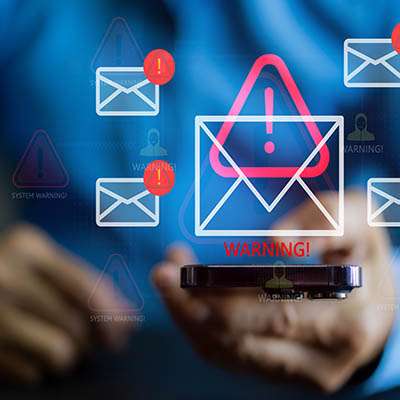Macro Systems Blog
Email Attachment Security Tips
While email attachments are a huge part of your digital life, they're also a favorite sneaky entry point for hackers, viruses, and scams. We've all been there, a quick click before we even think. That split second of laziness can turn into a massive headache for you and your whole job.
Before you tap that little paperclip and potentially wreck your day (or your company's network), you need to take a beat. Listed below is an essential checklist for safely opening files sent via email.
The 3 Must-Ask Questions
Don't even hover your mouse over the file until you've run it through this quick mental check:
- Who is the sender?
- What is the email asking you to do?
- What kind of file is it? (The extension is key!)
Who Is the Sender?
Hackers are masters of disguise. You have to be a detective to spot a fake.
- Check the actual email address - The name in your inbox might say "Your Boss," but they can easily spoof that display name. Hover your mouse over the sender's name to reveal the full email address. Look for little typos, like instead of the real one, or weird, random domains.
- Were you expecting it? - A file from a trusted contact is still a huge red flag if you weren't expecting it. Did your friend randomly send you a vague document? Did your accounting department suddenly send an invoice out of the blue? If the subject line is generic or the attachment is a total surprise, be suspicious.
- Verify, verify, verify - If the email looks iffy but claims to be from someone you know, call or text them right away. Use a different method of communication to confirm they sent it. Do not reply to the suspicious email!
What Is the Message Asking?
Once you're sure the sender is legit, look at the body of the email. Scammers are experts at playing mind games.
- Look for panic buttons - Scammers use intense language to rush you into clicking before you think. "Immediate Action Required," "Account Will Be Suspended," or threats about an "Overdue Invoice" are classic social engineering tricks designed to make you panic.
- Bad grammar and sloppy design - If a legitimate, professional company is emailing you, their communication will be polished. Obvious spelling mistakes, weird grammar, or just general unprofessional formatting are huge giveaways that it's a scam.
- Generic Greetings - If the email starts with something vague like "Dear Customer" instead of your actual name, that's often a sign that it's a mass-produced phishing attack.
What Is the File Type?
The file extension (the few letters after the period, like .pdf or .zip) is the biggest clue about what the file is designed to do.
- DANGER: executables - Files ending in .exe, .bat, .com, or .scr are actual programs that can run on your computer and should almost never be opened if received via email.
- Be careful with compressed and scripted files - .zip or .rar files can easily hide nasty code. Also, watch out for document files like .docm or .xlsm—the 'm' means they have macros (mini-programs) enabled, which can be malicious.
- Watch for double extensions - A file might be named invoice.pdf.exe. Because your computer might hide the final extension, it just looks like a safe PDF. The file is actually an executable—be vigilant!
How to Safely Open a File
If the attachment passes all your security checks and you still need to open it, follow these defense steps for an extra layer of protection:
Use Your Antivirus
Save the file to your desktop, but don't open it yet. Right-click the file and manually scan it using your updated antivirus program.
Try a Cloud Scanner
Services like VirusTotal let you upload a file for analysis. It checks the file against dozens of different security engines in a safe, cloud-based environment.
Keep Your Software Updated
Malware loves to use known security holes in old versions of your operating system (Windows, macOS) or apps like Microsoft Office. Enable automatic updates for everything.
Turn Off Auto-Downloads
Check your email client's settings. Some clients automatically download attachments in the background. Disable this feature so a potential threat remains harmless until you manually click to download.
Use Links, Not Attachments
If possible, tell your colleagues or clients to use a secure, cloud-based service and just send you a link instead of a direct attachment. These services have their own security and are generally safer.
When in doubt, protect yourself. It's always better to be safe than sorry. The one moment of caution before clicking is all it takes to keep your data, your device, and your career secure.
For more great content about technology, security, and business, visit our blog.





Comments